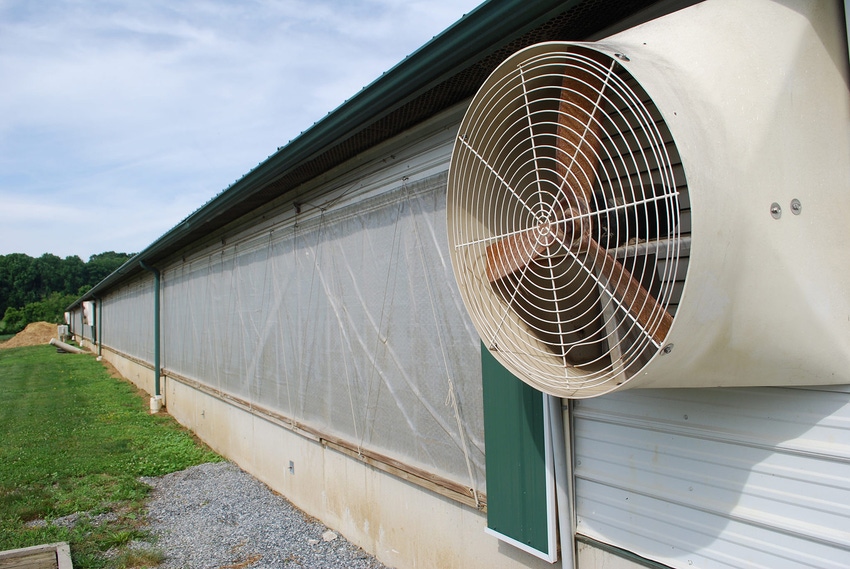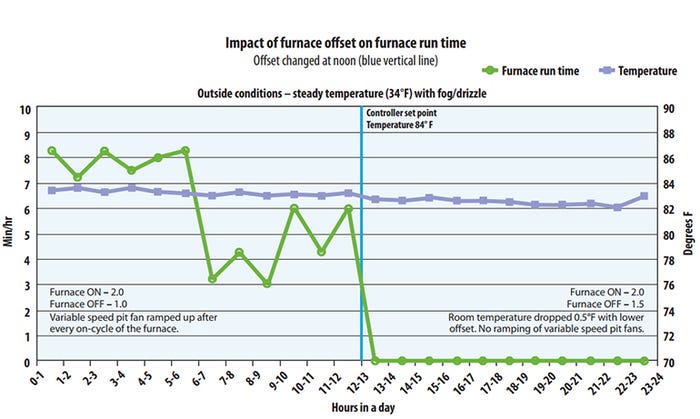One of the confusing issues is that energy savings techniques in a swine facility are very different from those in our homes.
October 25, 2017

By Jay Harmon, Ph.D., P.E., Iowa State University Agricultural & Biosystems Engineering Department Professor and Extension Livestock Housing Specialist
In the last few years energy usage and energy audits in the swine industry have become a hot topic. While energy costs are not a major part of the cost of production, it is a significant contributor to “non-feed” expenses. Energy usage is generally something that can be addressed relatively easily and can yield quick paybacks.
One of the confusing issues is that energy-saving techniques in a swine facility are very different from those in our homes. It is natural to think about adding more insulation or buying a more-efficient furnace. While these could also produce some savings in swine production, they may not have a worthwhile payback. The reason is simple. In swine buildings we do one thing not done in homes, we use a lot of ventilation. Eighty to 90% of the heat lost in a swine building is through the ventilation system, so the greatest opportunity for savings is to look at the biggest user first.
Another confusing area is the discussion about “leaks” through unplanned inlets. These include holes in curtains, cracks around doors, pit pump-out covers and leaky fan shutters. In our homes, leaks are a big source of wasted heat because it increases ventilation in our homes. In a swine building, leak points may not change the amount we are ventilating by much, but it does undermine the distribution of air, causing cold spots and perhaps requiring the building to be operated at a warmer temperature to compensate. Leaks cause the static pressure to drop, so fans will move slightly more air and waste more energy, but the bigger concern is poor air distribution that can cause chilling of some pigs and expose others to more stagnant air. A tight building shell creates the most-efficient and effective ventilation system, with slight energy consequences and larger animal comfort consequences.
The best place to start is to know how much electrical and propane energy your operation uses. Keeping a spreadsheet of this data will allow you to see trends by season, by groups and perhaps see if there is a shift for some unknown reason. Benchmarks can be important for comparison, and a peer group in your area might be a good place to begin, but numbers vary wildly for a variety of reasons. For instance, numbers for wean-finish barns may vary from 10 to 35 kWh per year per pig space. The time of year loaded, type of ventilation system and management make a lot of difference.
Another place to focus is on ventilation controller settings including heater settings, variable speed settings and settings associated with brooder heaters in wean-finish facilities. The room temperature will typically continue to rise after the heater shuts down. You can observe this by just watching the controller. If the temperature rises enough to reach the setpoint then the variable speed fans will increase speed and exhaust the heat that was just added. Setting the heater “off” temperature far enough below the setpoint to avoid this can save substantial amounts of propane. In one case, changing the setting by 0.5 degrees F resulted in a savings of 3.75 gallons of propane per furnace per day. (Click here for more information.) This is easy to diagnose by just listening to the equipment. Once the furnace shuts down you should not hear the fans increase speed before the furnace engages again.

Managing the variable speed setting can be somewhat of an art. Overventilation can result in excessive propane usage and under-ventilation can contribute to respiratory issues. Taking time to check the humidity levels and gas levels can allow fine-tuning of the required rate.
Setpoint management is important when using brooders in wean-finish facilities. Many will set the setpoint at a lower temperature, 72 degrees F for example, which means heat is exhausted anytime the room temperature exceeds 72. Instead, setting the setpoint higher, at 84 degrees F for example, but only turning the space heaters on when the temperature drops to 72 prevents wasting heat.
Many energy savings methods are simply a matter of managing ventilation. Nearly instantaneous savings can be realized if settings are improved. Start with the simple first. A quick payback could be in your future.
Iowa State University resources
• Farm Energy Publications
• Farm Energy: Case Studies — Benchmarking Energy Usage for Swine Producers
• Conserving energy by using localized heating in swine housing — Farm Energy
• Managing swine ventilation controller settings to save energy — Farm Energy
• Sizing Minimum Ventilation to Save Heating Energy in Swine Housing — Farm Energy
You May Also Like



